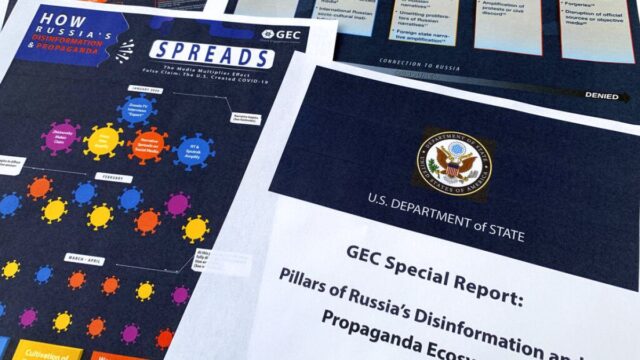According to a new report, the plot aims to amplify certain fake news by getting journalists to publish their denials and spread them.
According to a new study, some pro-Russian actors are deliberately bombarding journalists with fake news to disperse verification resources and expand the reach of disinformation.
Dubbed ‘Operation Overload’ by the Finnish software and methodologies company Check First, which published the reportthe ongoing plot involves anonymous actors contacting journalists in a coordinated campaign to get them to verify alleged fake news.
The ploy is based on the simple principle that “all publicity is good publicity.”
Verification requests are usually directed to Ukraine, France and Germanyand take the form of emails and social media mentions.
To date, the ‘Operation Overload’ has been addressed to more than 800 organizations of news in Europe and beyond, to which it has sent about 2,400 tweets and more than 200 emails.
Telegram has also played an important role, as most of the links sent to journalists took them to the messaging application.
Check First has discovered that in recent months there have been published more than 250 verifications that mention the false narratives created for ‘Operation Overload’.
For example, the sender of an email cited in the report poses as a concerned citizen who has apparently seen suspicious claims in Russian media and is asking journalists to take a look.
In another, the author makes it clear that he wants any fact-checking be shared widely so that as many people as possible can see it.
According to Check First, this shows that the objective of ‘Operation Overload’ is reach a wider audiencewhether the story is debunked or not.
Promote the Kremlin’s “military agenda”
The culprits use what Check First calls a “amalgamation of contents”in which they mix different types of content to create a credible and multi-layered story.
The avalanche of media creates a false sense of urgency among journalists, which promotes the success of the plot.
“The operation serves both for national propaganda and for foreign interference and information manipulation“says Check First. “While our report focuses primarily on this last aspect, it is essential to recognize that content considered false originates on social media platforms. Russian social networks and is disseminated on Russian-language websites and blogs, including state media, with the stated goal of promoting the Kremlin’s military agenda to local audiences.”
Much of the fake news takes the form of videos and create narratives to discredit the Ukrainian refugees who live in the West.
This video, for example, uses ‘Euronews’ assets to spread the story that a Ukrainian beauty salon in Poland is exposing its clients to mosquito bites to help them lose weight.
A reverse image search shows that the images come from a YouTube video broadcast in 2021, in which a Polish woman is detained in Gdansk. She has nothing to do with Ukraine or Ukrainians.
Another video wrongly attributed to ‘Euronews’ usedto old images of the French economist Philippe Aghion to talk about the supposed worsening of France’s economic crisis.
Where is the verification of information going?
While it may seem that the effectiveness of fact checks has been called into question, Check First urges journalists to stay vigilant and redouble your efforts to eliminate misleading content.
The company encourages journalists to verify identity from anyone who sends their concerns via email or social media.
“When you receive emails or direct messages, especially when they allude to ‘Kremlin propaganda,’ be wary of unsolicited emails and direct messages that contain links or attachments related to Ukraine, Russia or other politically sensitive topics,” advises Check First.
And encourages fact-checkers to collaborate among the media to identify patterns and possible coordinated efforts, improving awareness and collective response.
Check First also suggests that the media improve training in cybersecurity and best practices, such as reporting suspicious emails.
“Train your team to recognize content amalgamation, where different types of content are combined manipulated content to create a more convincing false narrative”, says. “This includes understanding how related videos, images and text can be detected on multiple dubious outlets or posted by suspicious social media accounts.”







